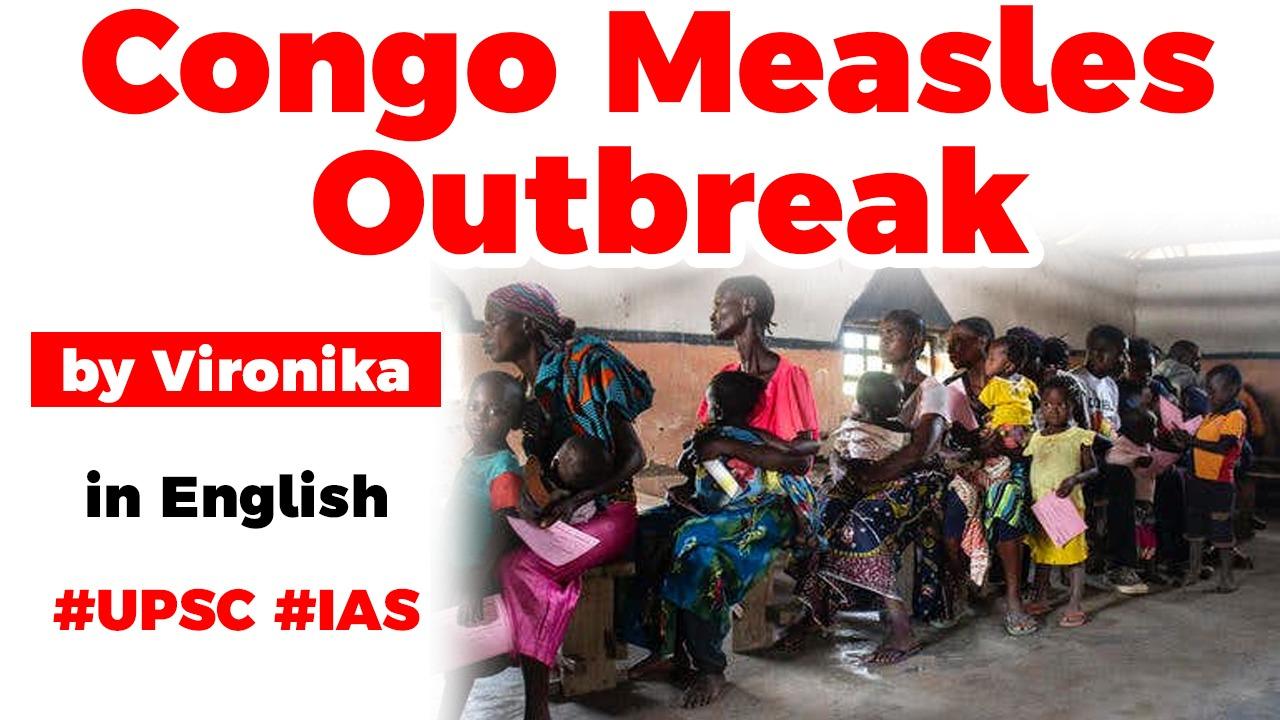Table of Contents
Context
- Measles has killed nearly 5,000 people in the Democratic Republic of Congo in 2019, after the disease spread to all the provinces in the country.
- Close to a quarter of a million people have been infected this year alone.
- Measles in DR Congo has now killed more than twice the number who have died of Ebola there in the last 15 months.
Reasons
- Anti-Vaccination Movement
- Poverty
- Vaccine Hesitancy
Reasons for vaccine hesitancy
- Compulsory nature
- Temporal adverse health
- Unfamiliarity
- Lack of trust

Measles
- Measles is a highly contagious viral disease.
- Initial symptoms, which usually appear 10-12 days after infection, include high fever, a runny nose, bloodshot eyes, and tiny white spots on the inside of the mouth.
- Several days later, a rash develops, starting on the face and upper neck and gradually spreading downwards.
- It remains an important cause of death among young children globally, despite the availability of a safe and effective vaccine.
Prevention
- Routine measles vaccinationfor children, combined with mass immunization campaigns in countries with high case and death rates, are key public health strategies to reduce global measles deaths.
Issue in Congo
- Many local communities in the DRC mistrust medical workers. It stems from years of regional isolation andconflict.
- In some areas, this mistrust has even led to violence against the “wealthy” and “foreign” humanitarian aid workers, resulting in treatment centres being closed and thecontainment response being stalled for both Ebola and measles.
Global measles vaccination
- A global report by WHO says since 2000, over 21 million lives have been saved through measles immunisation.
- For several years, the global coverage with the first dose of measles vaccine has stalled at 85%.
- This is far short of the 95% needed to prevent outbreaks, and leaves many people, in many communities, susceptible to the disease.
- Second dose coverage stands at 67%.
- Globally, there are concerns about vaccination gaps that are allowing the disease to resurface in areas where it is not very common.
India
- Incidence
- Government Initiatives
- With support from WHO, in November 2010, India launched a massive polio-style measles vaccination project in 14 high-burden states, in a three-phase campaign.
- Much work remains to be done to address misinformation.
- Social media plays a crucial role in spreading vaccine misinformation.
- A commitment by Facebook to reduce distribution of vaccine misinformation can go a long way in addressing vaccine hesitancy.
- Solution is as recently proposed by Doctors Without Bordersand The Alliance for International Medical Action.
- They suggested that instead of the international community delivering targeted aid for only Ebola, resources should be deployed to strengthen local infrastructure and provide a decentralised capacity to provide care to all communities.






















 WhatsApp
WhatsApp